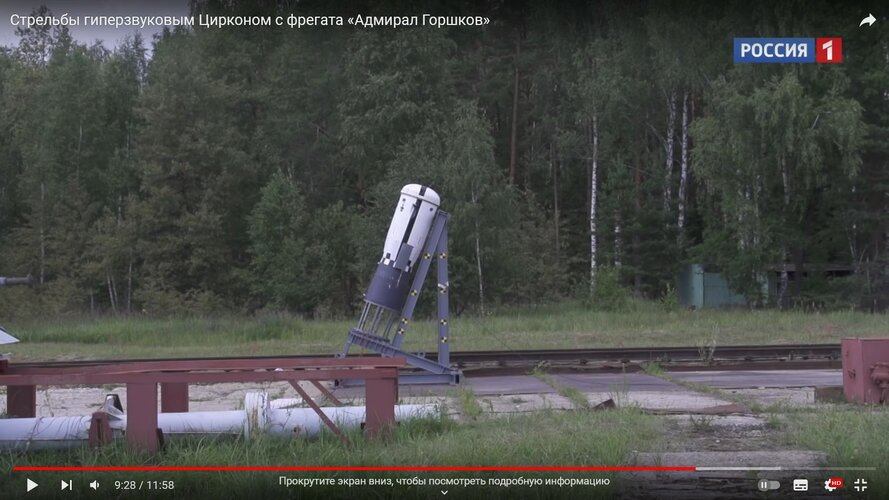PAC-3 MSE is a particularly maneuverable point defense system, though that is all it would be against something hypersonic. The fact is Ukraine does not a meaningful number of radars and launchers for that target type. More over even older types like Kh-22 have sufficient speed that to the best of my knowledge, they have never been intercepted.
You are using an out of date browser. It may not display this or other websites correctly.
You should upgrade or use an alternative browser.
You should upgrade or use an alternative browser.
NPOMash 3M22 Tsirkon Hypersonic Missile
- Thread starter bobbymike
- Start date
This "hood" orients the missiles in space and protects it from external influences at launch. Not only underwater, but also from the ship and from the ground
View: https://youtu.be/rpJdleN3Dv4?t=179
Attachments
Last edited:
TMA1
ACCESS: Top Secret
- Joined
- 6 February 2021
- Messages
- 556
- Reaction score
- 857
Been seeing your concept art and it looks pretty legit. So if true is this similar to our hyfly? Also I am adding this picture I saw someone posted on your forum that I think could add some weight to your speculations.

I could not find the origins of this image but I thought it would help in what you were trying to show with the four intakes.

I could not find the origins of this image but I thought it would help in what you were trying to show with the four intakes.
Last edited:
Forest Green
ACCESS: Above Top Secret
- Joined
- 11 June 2019
- Messages
- 9,421
- Reaction score
- 17,157
View: https://x.com/Archer83Able/status/1779566768933028191PAC-3 MSE is a particularly maneuverable point defense system, though that is all it would be against something hypersonic. The fact is Ukraine does not a meaningful number of radars and launchers for that target type. More over even older types like Kh-22 have sufficient speed that to the best of my knowledge, they have never been intercepted.
KurtDingus
ACCESS: Restricted
- Joined
- 29 November 2024
- Messages
- 2
- Reaction score
- 0
Are these 3D models available? Id like to try and print some.One of the possible versions
KurtDingus
ACCESS: Restricted
- Joined
- 29 November 2024
- Messages
- 2
- Reaction score
- 0
Thats all fine, I can clean it up. They look great. Ill take everything you can throw at me.this model is not for printing, it is full of inaccuracies and errors

QuadroFX
Russia, Chelyabinsk
Another one "Tsirkon" launch. This time in Mediterrian sea:
View: https://youtu.be/DiG3ZS50RSM

 ria.ru
ria.ru
View: https://youtu.be/eMBocYJX4vw
View: https://youtu.be/wqMY2PjmhGc
 vk.com
vk.com

ВМФ провел стрельбы гиперзвуковыми ракетами на учениях в Средиземном море
Российские корабли провели в Средиземном море учения, в ходе которых выполнили пуски гиперзвуковых ракет, сообщили в Минобороны. РИА Новости, 03.12.2024
VK.com | VK
Attachments
-
 1733234724831079_8rsSTsox.mp4_snapshot_00.34.884.png1 MB · Views: 42
1733234724831079_8rsSTsox.mp4_snapshot_00.34.884.png1 MB · Views: 42 -
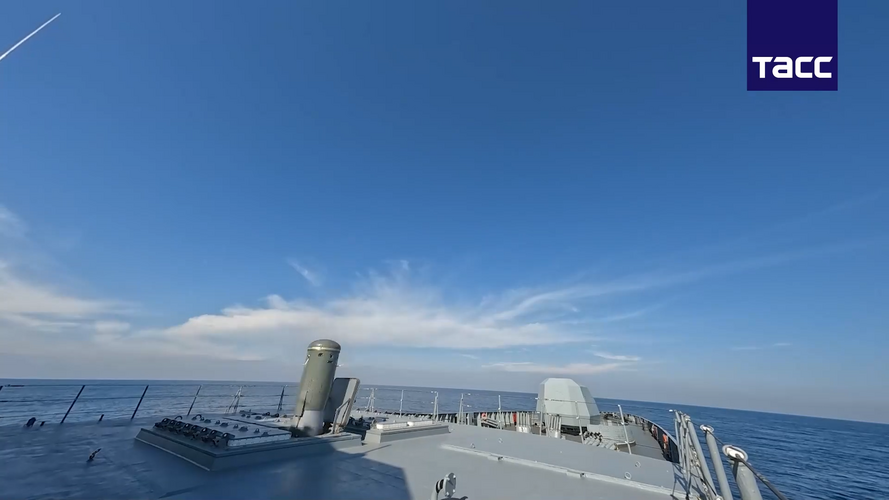 1733234724831079_8rsSTsox.mp4_snapshot_00.34.962.png1 MB · Views: 42
1733234724831079_8rsSTsox.mp4_snapshot_00.34.962.png1 MB · Views: 42 -
 1733234724831079_8rsSTsox.mp4_snapshot_00.35.044.png1 MB · Views: 45
1733234724831079_8rsSTsox.mp4_snapshot_00.35.044.png1 MB · Views: 45 -
 1733234724831079_8rsSTsox.mp4_snapshot_00.35.117.png1.1 MB · Views: 50
1733234724831079_8rsSTsox.mp4_snapshot_00.35.117.png1.1 MB · Views: 50 -
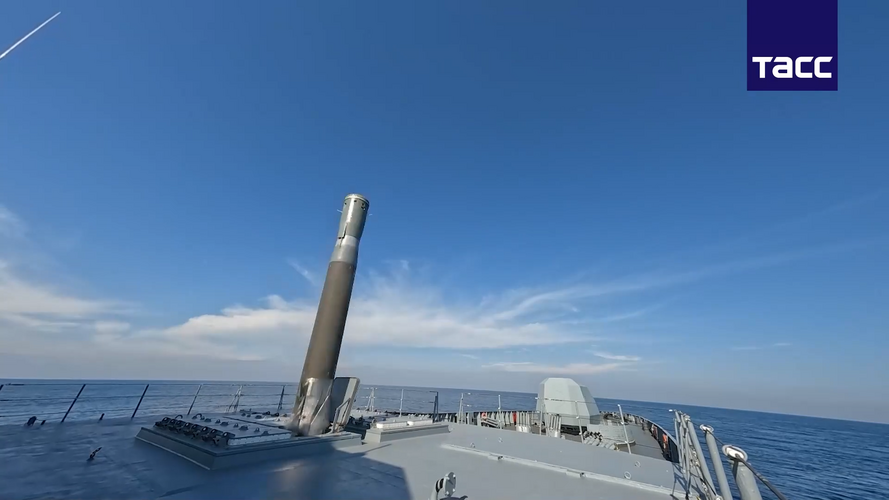 1733234724831079_8rsSTsox.mp4_snapshot_00.35.163.png1.1 MB · Views: 63
1733234724831079_8rsSTsox.mp4_snapshot_00.35.163.png1.1 MB · Views: 63 -
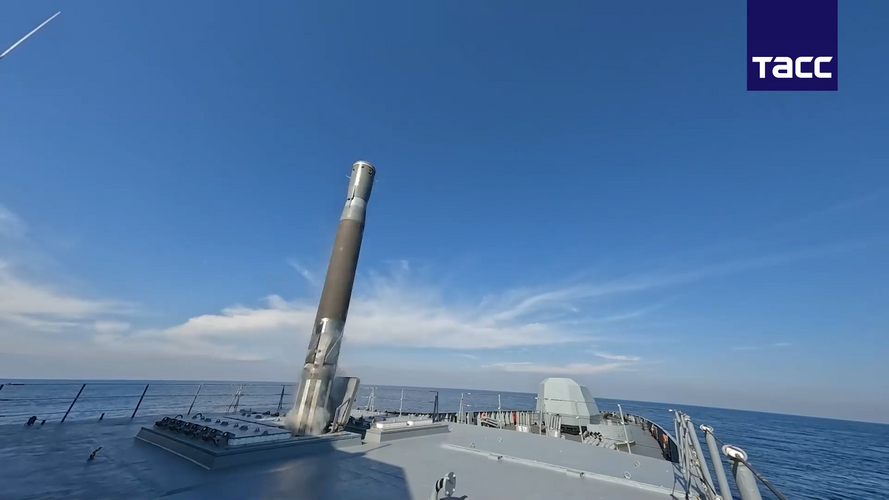 1733234724831079_8rsSTsox.mp4_snapshot_00.35.199.png1.1 MB · Views: 86
1733234724831079_8rsSTsox.mp4_snapshot_00.35.199.png1.1 MB · Views: 86
Last edited:

Our Best Look At Russia’s Shadowy Zircon Hypersonic Missile
The Russian Navy launched the Zircon cruise missile as part of a large-scale live-fire exercise in the Mediterranean. The Russian Navy launched the Zircon cruise missile as part of a large-scale live-fire exercise in the Mediterranean.
Are we sure about those mid body wings on the upper section? There is nothing resembling those in the launch video above. there are some folded fins at the bottom of the upper section. Those are maybe even fairly long fins, longer than the fins in the graphic above. but they still look like a single set of fins placed near the bottom quarter of the missile (upper stage) length.
TeourdBeourglaer
ACCESS: Restricted
- Joined
- 8 August 2022
- Messages
- 28
- Reaction score
- 27
That's what the Boeing X-51 HCM demonstrator looked like when it flew in ~2010 - 2013.
Since then when someone mentions "Scramjet" missile, the X-51 pops into everybody's mind.
Most people don't realize there are many different scramjet intake designs.
I'm pretty sure the Russians copied one of a joint US/AUS Scramjet designs for Tsirkon.
HACM, from what I've read and seen has a very fluid-like flowing conical inlet, like nothing we've seen on any other missile...
US HACM mock upThat's what the Boeing X-51 HCM demonstrator looked like when it flew in ~2010 - 2013.
Since then when someone mentions "Scramjet" missile, the X-51 pops into everybody's mind.
Most people don't realize there are many different scramjet intake designs.
I'm pretty sure the Russians copied one of a joint US/AUS Scramjet designs for Tsirkon.
HACM, from what I've read and seen has a very fluid-like flowing conical inlet, like nothing we've seen on any other missile...
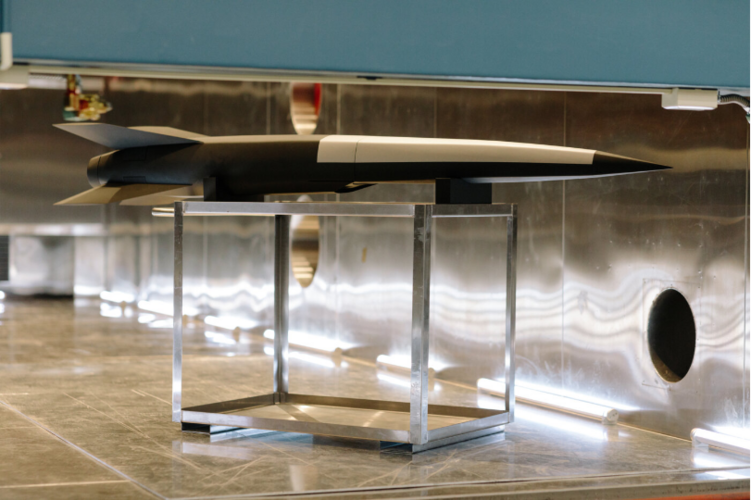

I believe the bottom photo is suspected to be NGs HALO submission. Certainly it has nothing to do with HACM, which is RTX.
Alright then.




 Imo, 99% sure zircon is purely rocket sustained.
Imo, 99% sure zircon is purely rocket sustained.
Doesn't mean, it's not a HCM though, well if you consider "cruise" part purely as flight characteristics/profile Rather than tying it up with "air-breathing( in this case sramjet)" propulsion that is.
Scram jet is a propulsion method that is synonymous with hcm.
But what if you can use purely rocket motors for maintaining same flight characteristics associated with sramjet powered HCMs, there's nothing stopping rocket propulsion from doing so.
With that Said while you can definitely achieve HCM flight characteristics and maneuverability with rocket motor, but it would be lot more inefficient compared to air breathing sramjet so to achieve desired range a somewhat bigger and lot heavier missile would be needed compared to using scramjet.
Though making a rocket sustained HCM will be lot more easier than developing scramjets.
With that Said definition of hcm is a missile that flies in depressed path at sustained 30-50km altitude, not following any predictable trajectory and lots of freedom of movement and good maneuverability during flight all that while flying at mach5+ in most of its flight path.
That's what makes it very hard to intercept and makes HCM scary, zircon even with rocket motors can achieve it.
So modification of HCM definition is needed, with not tying it up with propulsion.
Subcategories of HCM:-
1, HCM-RS( rocket sustained)
Pros:- easier and cheaper to builld and develop, proven, decade of experience and research, and designing a missile and Its internals around a rocket based propulsion is easier and tried and tested, while being just as deadly as HCM-AB.
Cons:- propulsion system is lot less efficient compared to air breathing
2, HCM-AB( Air breathing, scramjet in this case)
Pros:- lot more efficient.
Cons:- difficult and costly to develop.
So scramjet is not the only propulsion that can enable HCM flight characteristics, though its the most efficient way( for now) to enable those characteristics, though whether the extra cost and time it would take to develop scramjet to get that efficiency is worth it or not depends on case by case.
If we wish to develop a anti ship HCM with ~1000km range that is launched from land( size constraint are not much of a problem), then I would choose a bigger rocket sustained HCM due to it being easier to develop.
Vs
if we Wish to develop a HCM to launch multiple of those from a bomber aircaft then HCM-AB would be better and extra cost would be worth it.
So to choose between HCM-AB And HCM-RS it depends of what the desired range is and what size and weight constraints are there.
In terms of ability to penetrate enemy air defenses both will be equally deadly.
Using rocket propulsion also make it a lot easier and allows even countries like north korea of develop similar system for land attack role.
In 2022 NK tested a "hypersonic missile" which was previously assumed to be carrying a Marv warhead, but the description made by NK& tracking data provided by japan made the second stage sound more like a "boost-glide" vehicle than a traditional Marv similar to the "boost-glide" vehicle US is developing.

Them there's also HGV of NK

Recently tested anti ship hypersonic missile called LR-ASHM By India also seems to be a HCM-RS similar to Zircon, but with bigger control surfaces and larger size, as it's stated to have range upto 1500+km.
Though they call it "hypersonic glide missile" which is not completely wrong as it's flight characteristics seems like a hybrid between HCM and HGV, i thought of using boost glide for it, but it will be lot more maneuverable and seems to be maintain "constant altitude" like a hcm.

Then there is Shuarya missile, which can be called precursor or prototype of modern day HCM-RS missiles.


 acc. To this graph the max range in "hypersonic glide" of Shaurya is 700km, while zircon seems similar in size( ~10m length, 0.6-0.7m diameter) to this missile and is said to have ~1000km max range. This further supports my assumption of zircon being rocket powered as shaurya Is also purely rocket powered 2 stage missile.
acc. To this graph the max range in "hypersonic glide" of Shaurya is 700km, while zircon seems similar in size( ~10m length, 0.6-0.7m diameter) to this missile and is said to have ~1000km max range. This further supports my assumption of zircon being rocket powered as shaurya Is also purely rocket powered 2 stage missile.
Good read.
Surprisingly Indians seem to be the first ones to field hypersonic missiles that can cruise. More than a decade ago.
Though Russians still seems to be first one to make "anti ship" hypersonic missile that can cruise.
In terms of difficulty of interception all the systems mentioned here will be in same category of difficulty to intercept as HCM-AB( the bench mark for modern day hypersonic), though all being less efficient in terms of range.
HGV like chinese dfzf solves the range inefficiency problem, but they also need large booster to get to edge of space and generally less precise to control compared to powered missiles making them less ideal to use against moving targets, but chinese do seem to be developing an anti ship varient( currently only land attack varient exist, only hypersonic anti ship in chinese service for now is df21 ballistic missile) of that hgv with first tested reported to be done in 2023.


Then there's also russian avangard HGV.

 theaviationist.com
theaviationist.com
So modern hypersonics are being created and are either Close to enter service or already entered service.
But scramjet based ones are still little far away(US being most ahead in scramjet propulsion for now).


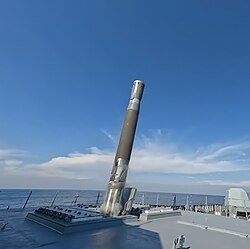
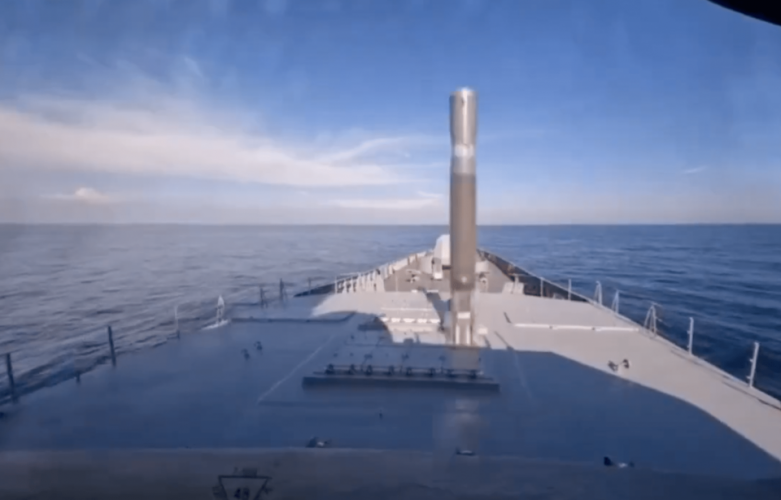
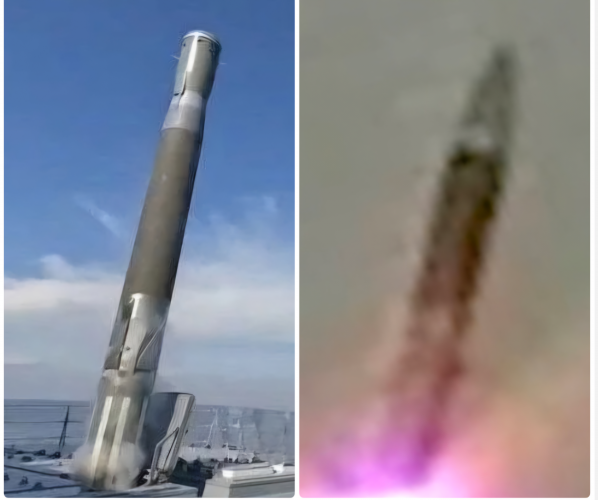 Imo, 99% sure zircon is purely rocket sustained.
Imo, 99% sure zircon is purely rocket sustained.Doesn't mean, it's not a HCM though, well if you consider "cruise" part purely as flight characteristics/profile Rather than tying it up with "air-breathing( in this case sramjet)" propulsion that is.
Scram jet is a propulsion method that is synonymous with hcm.
But what if you can use purely rocket motors for maintaining same flight characteristics associated with sramjet powered HCMs, there's nothing stopping rocket propulsion from doing so.
With that Said while you can definitely achieve HCM flight characteristics and maneuverability with rocket motor, but it would be lot more inefficient compared to air breathing sramjet so to achieve desired range a somewhat bigger and lot heavier missile would be needed compared to using scramjet.
Though making a rocket sustained HCM will be lot more easier than developing scramjets.
With that Said definition of hcm is a missile that flies in depressed path at sustained 30-50km altitude, not following any predictable trajectory and lots of freedom of movement and good maneuverability during flight all that while flying at mach5+ in most of its flight path.
That's what makes it very hard to intercept and makes HCM scary, zircon even with rocket motors can achieve it.
So modification of HCM definition is needed, with not tying it up with propulsion.
Subcategories of HCM:-
1, HCM-RS( rocket sustained)
Pros:- easier and cheaper to builld and develop, proven, decade of experience and research, and designing a missile and Its internals around a rocket based propulsion is easier and tried and tested, while being just as deadly as HCM-AB.
Cons:- propulsion system is lot less efficient compared to air breathing
2, HCM-AB( Air breathing, scramjet in this case)
Pros:- lot more efficient.
Cons:- difficult and costly to develop.
So scramjet is not the only propulsion that can enable HCM flight characteristics, though its the most efficient way( for now) to enable those characteristics, though whether the extra cost and time it would take to develop scramjet to get that efficiency is worth it or not depends on case by case.
If we wish to develop a anti ship HCM with ~1000km range that is launched from land( size constraint are not much of a problem), then I would choose a bigger rocket sustained HCM due to it being easier to develop.
Vs
if we Wish to develop a HCM to launch multiple of those from a bomber aircaft then HCM-AB would be better and extra cost would be worth it.
So to choose between HCM-AB And HCM-RS it depends of what the desired range is and what size and weight constraints are there.
In terms of ability to penetrate enemy air defenses both will be equally deadly.
Using rocket propulsion also make it a lot easier and allows even countries like north korea of develop similar system for land attack role.
In 2022 NK tested a "hypersonic missile" which was previously assumed to be carrying a Marv warhead, but the description made by NK& tracking data provided by japan made the second stage sound more like a "boost-glide" vehicle than a traditional Marv similar to the "boost-glide" vehicle US is developing.
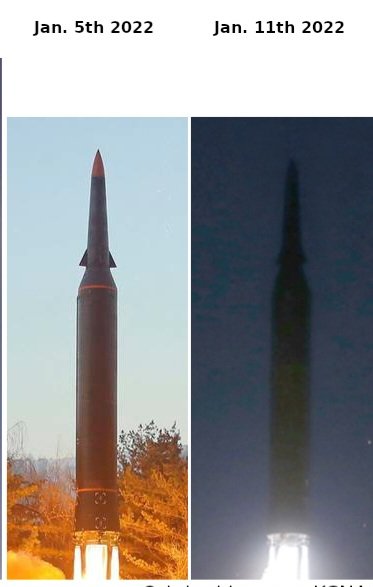
Them there's also HGV of NK
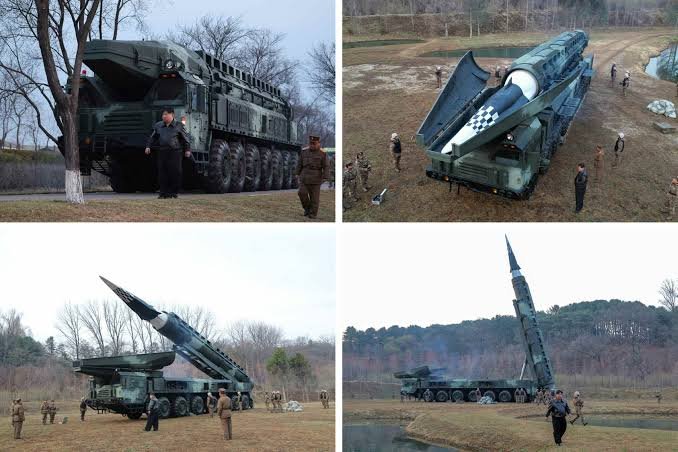
Recently tested anti ship hypersonic missile called LR-ASHM By India also seems to be a HCM-RS similar to Zircon, but with bigger control surfaces and larger size, as it's stated to have range upto 1500+km.
Though they call it "hypersonic glide missile" which is not completely wrong as it's flight characteristics seems like a hybrid between HCM and HGV, i thought of using boost glide for it, but it will be lot more maneuverable and seems to be maintain "constant altitude" like a hcm.
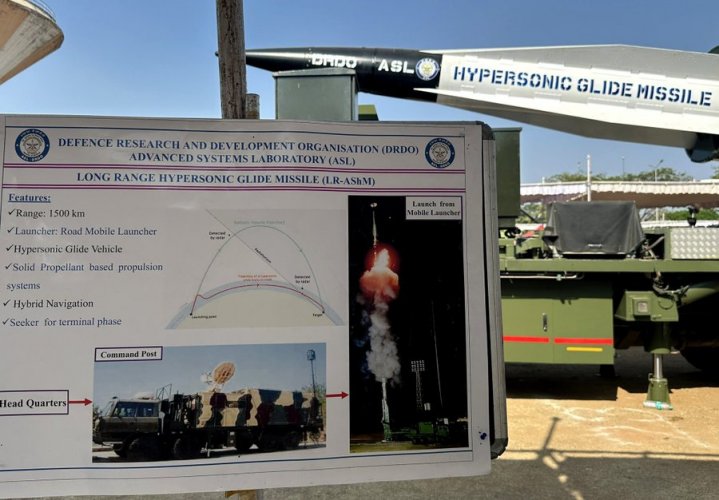
Then there is Shuarya missile, which can be called precursor or prototype of modern day HCM-RS missiles.
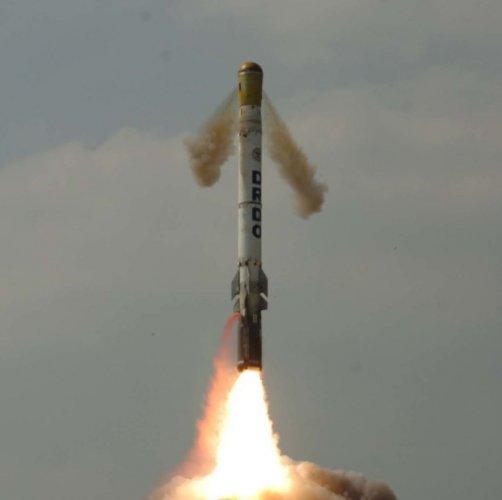
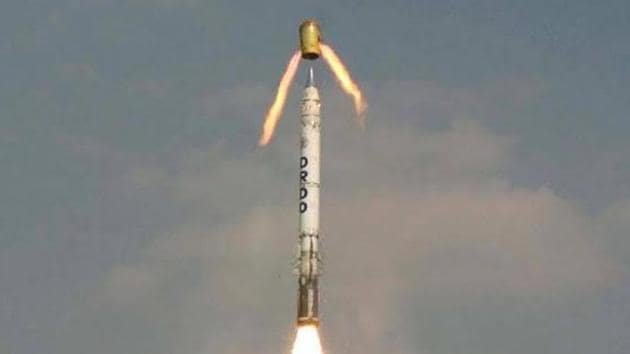
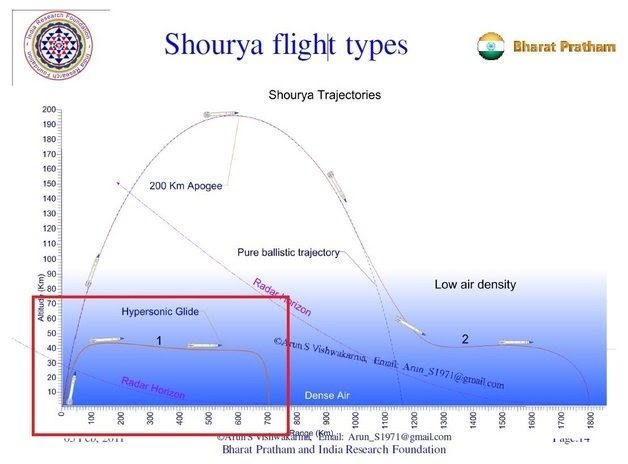 acc. To this graph the max range in "hypersonic glide" of Shaurya is 700km, while zircon seems similar in size( ~10m length, 0.6-0.7m diameter) to this missile and is said to have ~1000km max range. This further supports my assumption of zircon being rocket powered as shaurya Is also purely rocket powered 2 stage missile.
acc. To this graph the max range in "hypersonic glide" of Shaurya is 700km, while zircon seems similar in size( ~10m length, 0.6-0.7m diameter) to this missile and is said to have ~1000km max range. This further supports my assumption of zircon being rocket powered as shaurya Is also purely rocket powered 2 stage missile.Surprisingly Indians seem to be the first ones to field hypersonic missiles that can cruise. More than a decade ago.
Though Russians still seems to be first one to make "anti ship" hypersonic missile that can cruise.
In terms of difficulty of interception all the systems mentioned here will be in same category of difficulty to intercept as HCM-AB( the bench mark for modern day hypersonic), though all being less efficient in terms of range.
HGV like chinese dfzf solves the range inefficiency problem, but they also need large booster to get to edge of space and generally less precise to control compared to powered missiles making them less ideal to use against moving targets, but chinese do seem to be developing an anti ship varient( currently only land attack varient exist, only hypersonic anti ship in chinese service for now is df21 ballistic missile) of that hgv with first tested reported to be done in 2023.

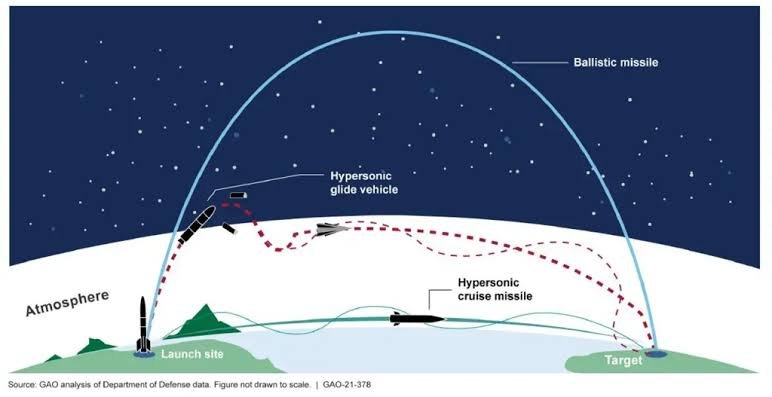
Then there's also russian avangard HGV.

Russia Deploys Long Range Hypersonic Missile System “Invulnerable to Intercept”.
Avangard Hypersonic Glide Vehicle Claimed to Fly at “Mach 27”, Carries MIRVs (Multiple independently targetable reentry vehicles). Russian state news
So modern hypersonics are being created and are either Close to enter service or already entered service.
But scramjet based ones are still little far away(US being most ahead in scramjet propulsion for now).
Last edited:
Dang, this speculation was ahead of its time.Is there any actual hard information on this? For all we know it could just be a rocket, something like a mini-Shaurya.




